|
Atlin began its contact with
aviation in 1928 with the landing of a Ryan B-1 Brougham of
the Yukon Airways and Exploration Co. Ltd. - not on the
water, but on the ice of Atlin Lake. A series of subsequent
arrivals over that winter convinced the citizens of Atlin of
the need to develop a land airfield nearby. In the summer
of 1929, community volunteers constructed a 1,800 dirt strip
to the east of the town site.
In the 1930s Atlin become
something of a hub for prospecting, exploration and mining
activity. Aircraft on skis, floats and wheels came and
went, bringing the adventures and stories that accompanied
the pioneering days of aviation in the north. The early
days of bush flying in pursuit of resources claimed many of
the primitive aircraft used to transport prospectors and
equipment.
|
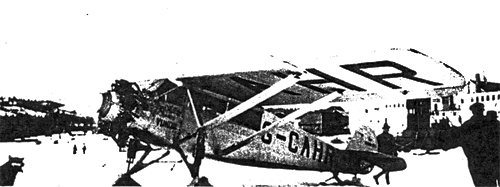
Return to
map |
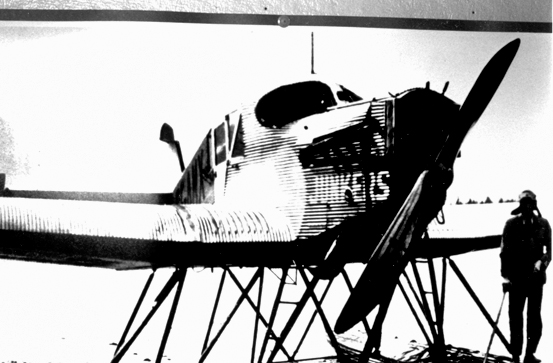
. |
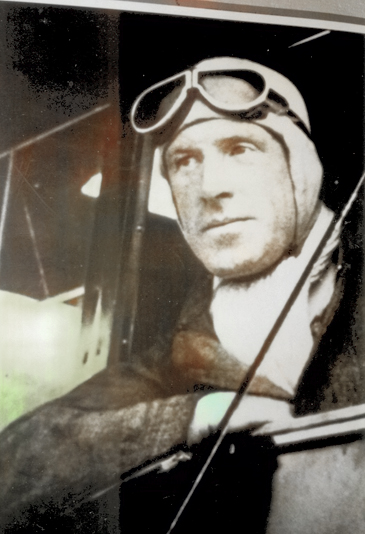
In
October 1930, “Paddy” Burke was
flying some miners in a Junkers F-13 belonging to the Air
Land Manufacturing Co. of Vancouver. Bad weather forced a
landing on the Laird River and the aircraft was damaged in
subsequent attempts to take off. |
A huge
search effort was mounted by several aircraft, including
the Bellanca CH-300 shown here. The two miners, near
starvation, were finally recovered in early December but
“Paddy” Burke had died due
to a pre-existing medical condition.
|
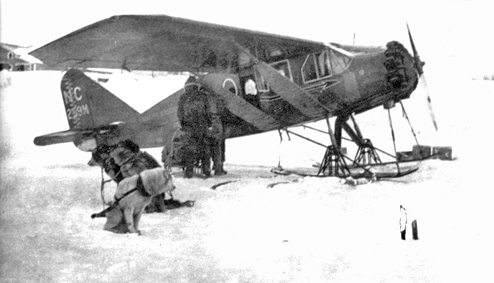
. |
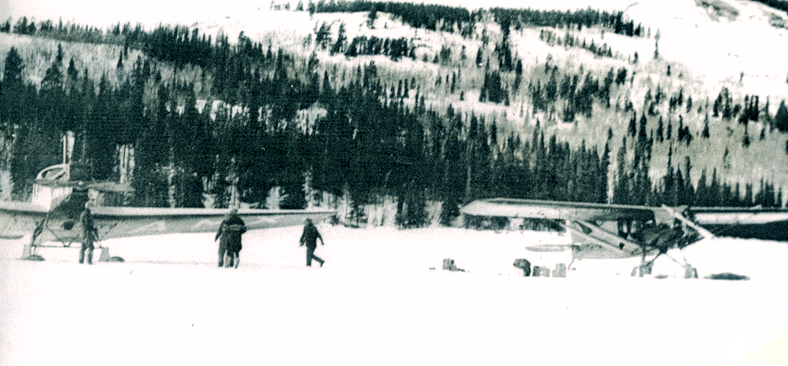
Burke’s body
was recovered and buried in Atlin. The aircraft he had
flown was recovered the following February and returned to
service. It is shown here with another Bellance PM-300, one
of the rescue aircraft.
. |
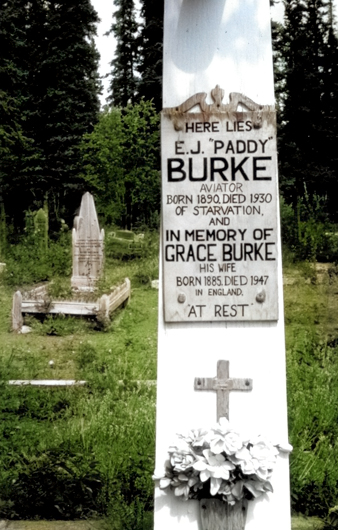 |
|
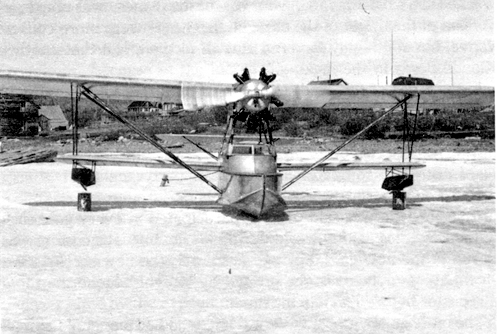
.
|
.
The summer
of 1932 saw the arrival of no less than five Eastman E-2
flying boats using Atlin as their base camp to support a
gold mining venture. The Eastman E-2
Sea Rover shown here on the ice at Atlin is warming
its engine in preparation for flight. When the mining
venture failed, most of the aircraft departed, leaving James
Eastman—the builder of the flying boats—in Atlin, with one
airplane, to continue his search for gold until he died in
1945. Other local legends included Frank Barr (who left
Atlin in 1937) and Herman Peterson,
who started the successful Peterson Airways (later Coast
Range Airways) in Atlin in 1950.
Return to
map
Back to top of
page |
In August 1953, a search was
mounted for Peterson when
he failed to arrive at his destination, Stewart, BC. He
walked into Telegraph Creek three days later, but not
before RCAF Norseman GB-M met its end after a search
mission trying to land in blustery conditions behind
Atlin’s First Island. Fortunately, no one was killed
but the aircraft was a write-off.
Back to top of
page
. |
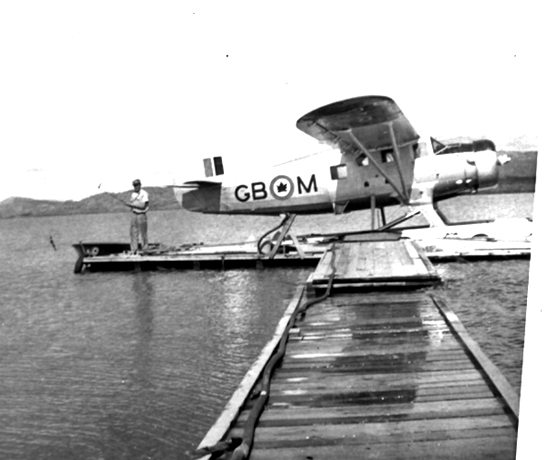
. |
|
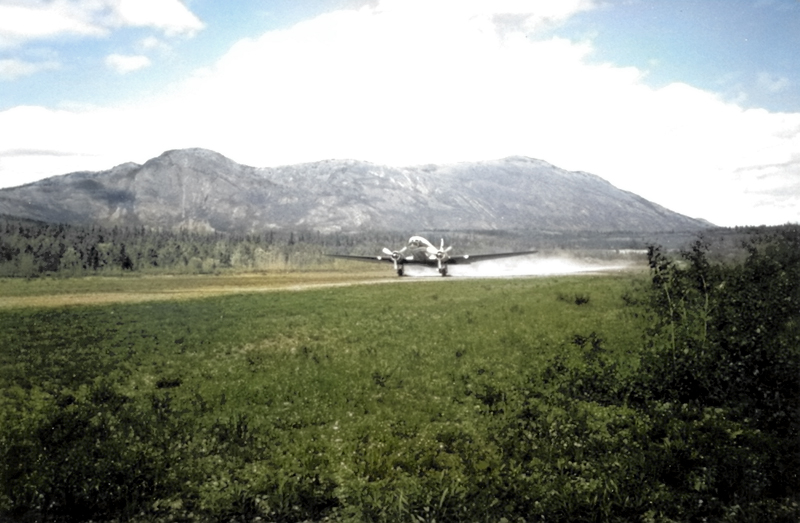
. |
.During World War II, the
airport runway was realigned and lengthened. Until
1951, Atlin could only be reached by air and the
community continued to rely on air connections for many
years after. This Southern Airways DC3 is shown at
Atlin in June 1981.
Return to
map |
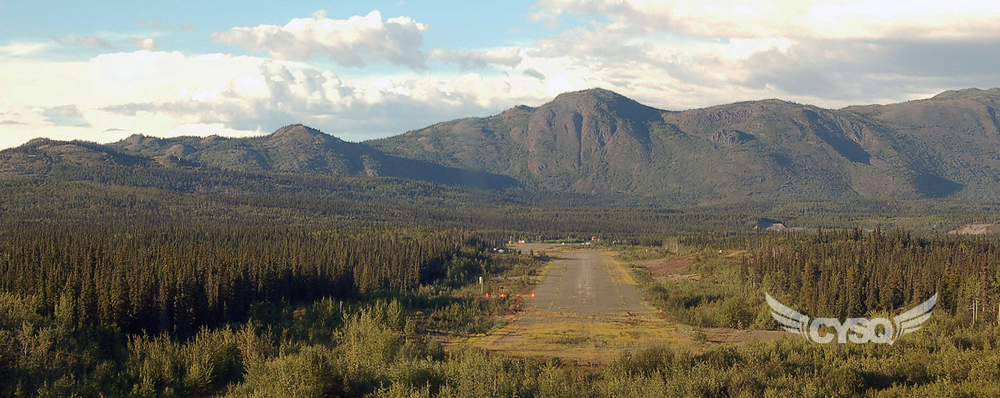
The Atlin airstrip (Peterson
Field--CYSQ) is now owned and operated by
the Atlin District Airport Association. It
offers a 3,950 foot gravel runway, basic
services and is currently classified as a port
of entry by Nav Canada.
. |
As well, the town continues
to be served by the Atlin Water
Aerodrome (CAD6), just off the town site. This
PA23 on floats is shown taking off beside First Island
in 2000.
|
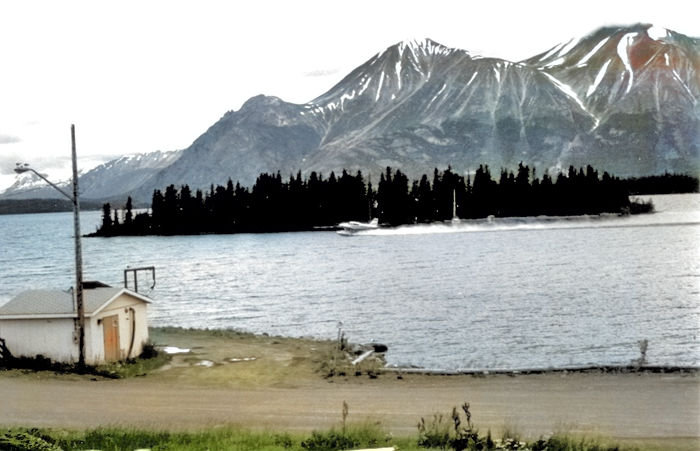
. |
|
.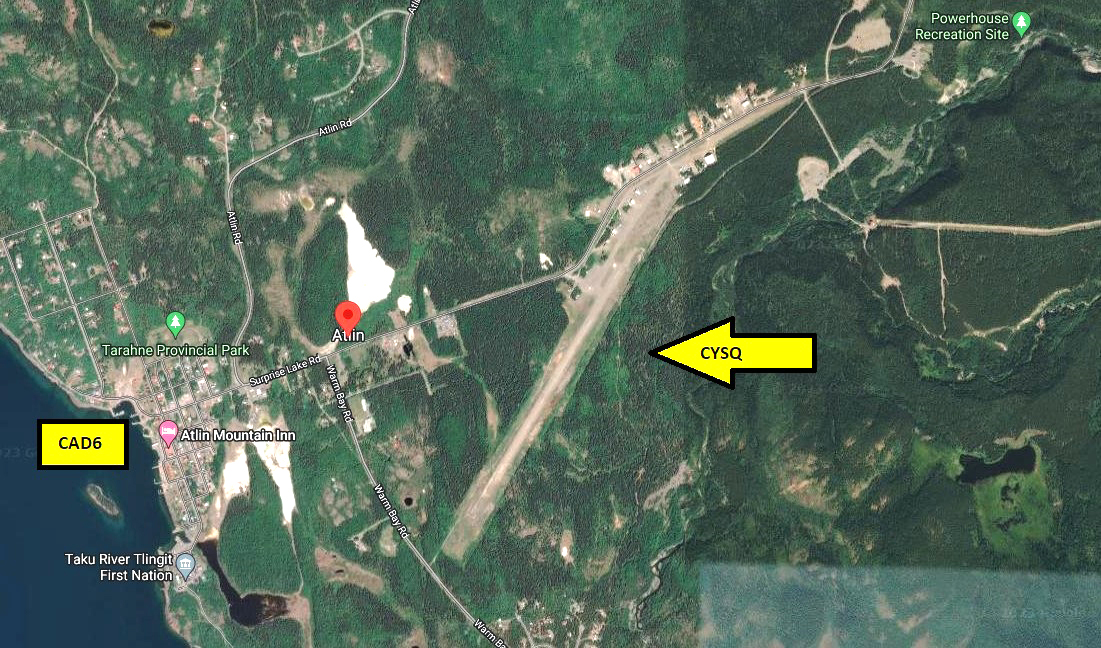 |
Note: Pictures
courtesy Chris Weicht except: current north facing view of
airstrip courtesy CYSQ; satellite view courtesy Google Maps.
 ©
British Columbia Aviation Museum Updated:
2023-01-17 ©
British Columbia Aviation Museum Updated:
2023-01-17
|